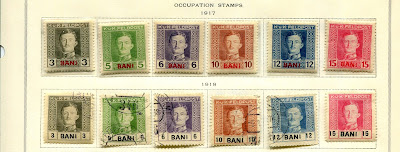Anymore, only stamp collectors recognize “Ile Rouad” as a real
place on planet earth. Most folks, if they at all know about this small dot of
an island in the eastern Mediterranean, call it Arwad (أرواد), the Arabic
rendering of the ancient Phoenician place name.
In early 1915, the island
city was a quiet Ottoman fishing village, although in the process of becoming a
haven for French spies eager for intelligence about war preparations in Ottman Syria.
On September 1 of that year the French navy invaded and, eventually, used the
island to defeat the Ottoman military. Perhaps the French recalled the island’s
strategic usefulness to the Crusaders in the late 13th century.
Under a League of Nations
mandate (1920), the French maintained a presence in Arwad until 1945 and hoped
to build a military base there. After World War II ended, however, the United
States pressured France to return the island to Syria unconditionally.
Ile Rouad’s 16 stamps were
issued in 1916 and continued in use until 1919 whereupon the TEO (occupied
enemy territory) stamps of French Syria replaced them. All are overprinted
stamps of French Levant. Big Blue provides space for half of these, Scott numbers
4 through 12. They are cheap and easy to collect. In contrast, numbers 1
through 3, the ones with vertical hand-stamped overprints, are costly. These,
the results of a stamp dealer’s speculation (1), were not regularly issued and,
if cancelled, were likely not used postally.
Ile Rouad, Scott #3, 1 pi on
25c, blue
Census: eight in BBs, four on supplement page.
(1) https://www.dcstamps.com/ile-rouad/




























































































































